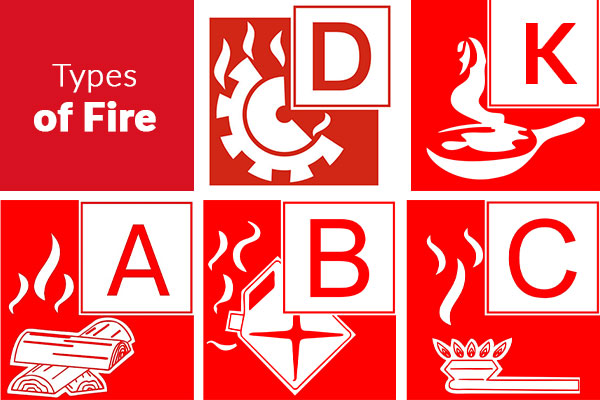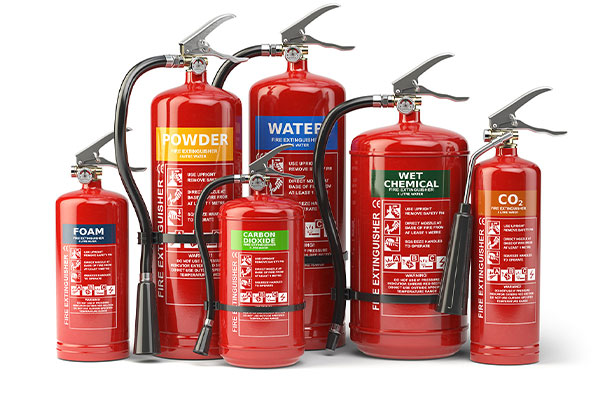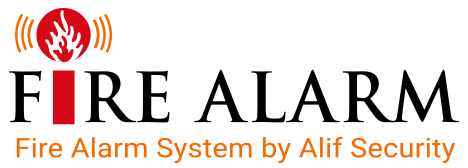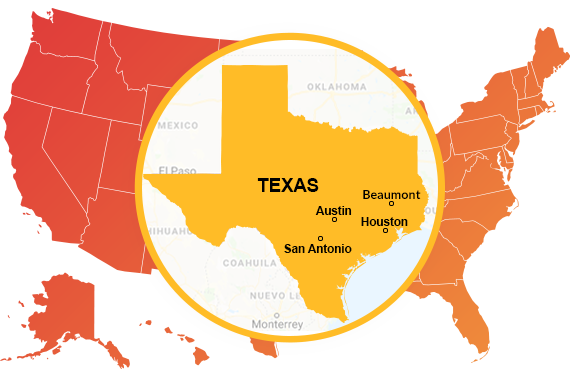The Different Types of Fire Extinguishers
Humankind has been using fire for millennia. It is one of our most useful discoveries, one which we use to our advantage for our own survival and protection. However, fire also presents a serious danger to our lives and properties.
One of our most common household defenses against domestic fires is the fire extinguisher. Although not recommended for use on out-of-control conflagrations, fire extinguishers are useful against small fires.
A fire extinguisher typically consists of a cylindrical pressure vessel which holds the fire-fighting chemical. There are several basic types of fire extinguishers according to the Fire Equipment Manufacturer’s Association. Each one of them uses a different fire-fighting agent designed to deal with one or more elements of the fire triangle, the three things that have to be present for a fire to take place:
- Heat
- Oxygen (from the air)
- Fuel (the thing that can burn, e.g wood, cotton, coal, etc.)
- Class A – Includes ordinary combustibles like paper, cloth, wood, plastics, and garbage
- Class B– Includes inflammable liquids like gasoline, inflammable paint, and petroleum oil. Inflammable gases like butane and propane are also included in this category.
- Class C – Includes energized electrical elements like household appliances, motors, and transformers.
- Class D – Includes fires in combustible metals like aluminum, magnesium, sodium, and potassium.
- Class K – Includes fires in cooking oils or greases like animal fats and vegetable oils.


- Water and Foam –For Class A fires.
- Carbon Dioxide –For Class B and C fires.
- Dry Chemical –Multipurpose dry chemical fire extinguishers are for Class A, B, and C fires. Ordinary dry chemical can be used on Class B and C fires only.
- Wet Chemical –For Class K fires and some Class A fires, depending on manufacturer specifications.
- Halogenated or Clean Agent –For Class B and C fires. Some clean agent fire extinguishers can also be used on Class A fires, depending on manufacturer specifications.
- Dry Power – For Class D fires
- Water Mist – Primarily for Class A fires, although it is also safe for use on Class C fires.
- Cartridge-Operated Dry Chemical – Multipurpose dry chemical can be used on Class A, B, and C Fires. Ordinary dry chemical is for class B and C fires only.
For more articles on fire safety, please visit the Fire Alarm Houston blog.
- Aldine
- Alvin
- Ames
- Anahuac
- Angleton
- Arcola
- Atascocita
- Austin
- Bacliff
- Bailey Prairie
- Barker
- Barrett
- Bay City
- Bayou Vista
- Baytown
- Beach City
- Beasley
- Beaumont
- Bellaire
- Boling
- Bonney
- Brazoria
- Brazos Country
- Brookshire
- Brookside Village
- Bunker Hill Village
- Cedar Park
- Channelview
- Cinco Ranch
- Clear Lake Shores
- Cleveland
- Cloverleaf
- Clute
- Conroe
- Corsicana
- Cove
- Crosby
- Cumings
- Cut And Shoot
- Cypress
- Damon
- Danbury
- Dayton
- Dayton Lakes
- Deer Park
- Dickinson
- East Bernard
- El Lago
- Fairchilds
- Fifth Street
- Fort Bend
- Four Corners
- Freeport
- Fresno
- Friendswood
- Fulshear
- Galena Park
- Galveston
- Grand Prairie
- Greatwood
- Guy
- Hardin
- Harris
- Hedwig Village
- Hempstead
- Highlands
- Hillcrest
- Hilshire Village
- Hitchcock
- Hockley
- Holiday Lakes
- Houston
- Huffman
- Hufsmith
- Humble
- Hungerford
- Hunters Creek Village
- Huntsville
- Iago
- Iowa Colony
- Jacinto City
- Jamaica Beach
- Jersey Village
- Katy
- Kemah
- Kendleton
- Kenefick
- Kingwood
- La Marque
- La Porte
- Lake Jackson
- League City
- Liberty
- Liverpool
- Livingston
- Lorena
- Magnolia
- Manor
- Manvel
- Meadows Place
- Mission Bend
- Missouri City
- Mont Belvieu
- Montgomery
- Morgans Point
- Nassau Bay
- Navasota
- Needville
- New Territory
- North Cleveland
- North Houston
- Oak Island
- Oak Ridge North
- Old River-Winfree
- Orange
- Orchard
- Panorama Village
- Pasadena
- Pattison
- Patton Village
- Pearland
- Pecan Grove
- Pine Island
- Pinehurst CDP
- Piney Point Village
- Pleak
- Plum Grove
- Port Arthur
- Porter
- Porter Heights
- Prairie View
- Richardson
- Richmond
- Richwood
- Roman Forest
- Rosenberg
- Rosharon
- Sabine Pass
- San Antonio
- San Felipe
- San Leon
- Santa Fe
- Seabrook
- Sealy
- Seguin
- Sheldon
- Shenandoah
- Shoreacres
- Silsbee
- Simonton
- South Houston
- Southside Place
- Splendora
- Spring
- Stafford
- Stagecoach
- Sugar Land
- Taylor Lake Village
- Texas City
- The Woodlands
- Thompsons Alief
- Tiki Island
- Todd Mission
- Tomball
- Waller
- Wallis
- Webster
- West Columbia
- West University Place
- Weston Lakes
- Willis
- Woodbranch
- Woodloch


